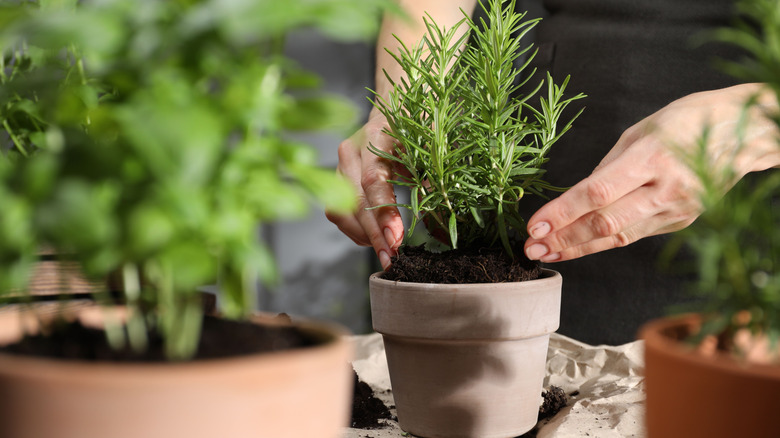How To Choose The Best Pot For Your Indoor Rosemary Plants
Growing rosemary indoors can be a challenge, especially when it seems to wilt or turn brown no matter how carefully you water it or where you place it. More often than not, the real issue isn't your watering, lighting, or fertilizer. It might seem easy to overlook, but it's the pot. Rosemary has delicate roots that hate sitting in soggy soil, and the wrong container can trap moisture, leading to slow growth or root rot. Whether you're growing an indoor herb garden or just over-wintering your rosemary, choosing a good plant pot means giving your rosemary the best chance to thrive right from the start. A pot with excellent drainage and breathable walls is key for growing healthy rosemary, especially indoors where moisture isn't evaporated as quickly.
You should also choose a pot that fits the size of your plant. If your rosemary plant is about 8 inches tall, choose a pot that's at least 8 inches deep. As for width, a good rule of thumb is to leave about an inch of space between the roots and the sides of the pot. Move to a bigger pot as your plant grows over time, or prune the roots to maintain its size if you prefer to keep the same container.
Terracotta pots allow proper drainage for indoor rosemary plants
Now you're probably wondering, is it better to grow herbs in plastic or terracotta pots? When it comes to growing rosemary indoors, the latter is definitely a better choice. The advantages that terracotta pots offer make them the best indoor containers to help your plants thrive and grow. Terracotta allows for natural air circulation through the clay walls, which helps the soil dry out evenly. This prevents root rot, a common issue for rosemary (and several other plants) grown indoors.
Another key factor to consider is drainage. Always make sure your pot has a drainage hole and a drainage pan underneath. This setup helps create the well-drained conditions rosemary loves. Interestingly, rosemary is sometimes called an "upside-down plant" because it tends to absorb moisture through its foliage while keeping the roots dry. To maintain this balance, add a thin layer of small rocks or gravel at the bottom of the drainage pan. This prevents the pot from sitting directly in water and keeps your rosemary's roots comfortably dry.

